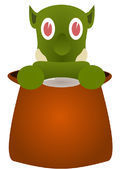How do you make a sound "colder"?
Ok, so I have been doing sound design for a while and I think I am getting better. My question is, what are some tricks to making the sounds "colder" or "hotter". I think what I mean is, using plug-ins, what will change tthese characteristics? Thanks, I appreciate any help.
For colder a bit of an echo might help. I don't know about hotter though.
By 'cold' and 'hot', I'm assuming you mean 'ice' and 'fire' (the terminology also applies to characteristics of audio dynamics in audio engineering).
It's all about the ambience. Take your original sound and add an ambient reverb effect to it - preferably as a send printed to a new track. Now EQ your ambience. You'll have to experiment with different EQ settings, but basically you'll need to notch out (very small notches) patterns in the frequency range in order to make the ambience sound 'cold'. For the 'hot' effect, you could just leave your sound as it is and use the 'cold' sound for relativity. If not, try experimenting with blending different types of sound FX into the ambience. For example, a 'steam' sound effect would work nice if blended properly into the ambience.
As Moe said, an echo effect might add to the illusion of hot/cold, but don't overdo it, as it is meant more for spatial characteristics. You could do the same technique as with the ambience, with the echo effect, to achieve the illusion that a sound is occuring within a hot/cold room.
This is all theoretical, I'm sure there is probably a better way.
BTW, I think there are harmonic modulation plug-ins that would work real well to give the effect of hot/cold.
It's all about the ambience. Take your original sound and add an ambient reverb effect to it - preferably as a send printed to a new track. Now EQ your ambience. You'll have to experiment with different EQ settings, but basically you'll need to notch out (very small notches) patterns in the frequency range in order to make the ambience sound 'cold'. For the 'hot' effect, you could just leave your sound as it is and use the 'cold' sound for relativity. If not, try experimenting with blending different types of sound FX into the ambience. For example, a 'steam' sound effect would work nice if blended properly into the ambience.
As Moe said, an echo effect might add to the illusion of hot/cold, but don't overdo it, as it is meant more for spatial characteristics. You could do the same technique as with the ambience, with the echo effect, to achieve the illusion that a sound is occuring within a hot/cold room.
This is all theoretical, I'm sure there is probably a better way.
BTW, I think there are harmonic modulation plug-ins that would work real well to give the effect of hot/cold.
http://blog.protonovus.com/
Hmmm...When I think of a cold sound, I think of a sound that is thin and metallic. What I would do achieve this is to remove all warmth from the sound in question by taking out the mids and the lows. This leaves only the high range which is very piercing and unpleasant. Perhaps in a certain context that can be seen as cold...
Thanks guys, is there a good forum to get some work for a begining sound designer? I would like to further my skills and work on some actual projects.
Quote:
Original post by Rain 7
Hmmm...When I think of a cold sound, I think of a sound that is thin and metallic. What I would do achieve this is to remove all warmth from the sound in question by taking out the mids and the lows. This leaves only the high range which is very piercing and unpleasant. Perhaps in a certain context that can be seen as cold...
I would've thought warm would be taking out the high and low frequencies, with only the mid warming your ears.
Quote:
Original post by LongeBane Quote:
Original post by Rain 7
Hmmm...When I think of a cold sound, I think of a sound that is thin and metallic. What I would do achieve this is to remove all warmth from the sound in question by taking out the mids and the lows. This leaves only the high range which is very piercing and unpleasant. Perhaps in a certain context that can be seen as cold...
I would've thought warm would be taking out the high and low frequencies, with only the mid warming your ears.
Yea. Those are generally my thoughts as well. :) Though of course there are probably alternating opinions on what hot and cold means and how it applies to sound.
So what I done did here is get some Big ASS screenshots how I might approach making sounds cold or hot. There are a ton of different ways, I chose some basic EQ tricks. What everyone has been saying about generally removing lows for cold sounds and removing highs for warm sounds is one simple way of looking at it.
I chose a trickling stream of water for this test. Here is the EQ insert and Spectral Analyzer of the default sound.
Listen to it here - Default
Default EQ and SPAN picture
To give the feeling of cold, I chose to look at the most prevalent frequency range in the original clip. It's highest point on the chart, that is. I guessed between 400hz and 600hz. I chose 500hz as my starting point and then boosted harmonics from there. That is, 500hz (point 2), 1000hz (point 3), 2000hz (point4)...and so on doubling the frequency.
More generally, I cut off everything below 500hz (point 1) with a weak shelving eq. I then "opened up" the top end, with points 5 and 6. This gives sound an airy presence and helps tremendously with chilling certain sounds.
Again, there is not a science about this, I just chose this method. You can twaek a lot more and probably will with different subject matters.
Listen to it here - Cold
Cold EQ and SPAN picture
Finally to emulate warmth I more or less used my ears to tune it. You can see I started with points 1-6 using frequency harmonics. Then I started playing with Q and Gain. Notice I cut off the "airy presence" and in fact closed that end off. The lower frequencies are generally boosted, but note as I got closer towards 1k-3k I started dipping out entirely. Those are the frequencies that the human ear hears most because human speech falls roughly within these boundaries.
This is a good thing to be aware of because whatever sounds you have that show a strong presence between 1k-3k people will hear and identify quicker and much sharper. Since we are going for warmth and general fuzziness I toned those down.
Listen to it here - Hot
Hot EQ and SPAN Picture
It's really not as complicated as it seems, it's just knowing what direction to go in and figuring it out as you go per project. You can get close the same effects by just "turning down the treble, turning down the bass" or more like a tone knob. Also, the same EQ I showed here wouldn't necessarily work the same for wind, or rain, or whatever else you can think of.
Hope the screenies weren't too big for any of you!
Tony
I chose a trickling stream of water for this test. Here is the EQ insert and Spectral Analyzer of the default sound.
Listen to it here - Default
Default EQ and SPAN picture
To give the feeling of cold, I chose to look at the most prevalent frequency range in the original clip. It's highest point on the chart, that is. I guessed between 400hz and 600hz. I chose 500hz as my starting point and then boosted harmonics from there. That is, 500hz (point 2), 1000hz (point 3), 2000hz (point4)...and so on doubling the frequency.
More generally, I cut off everything below 500hz (point 1) with a weak shelving eq. I then "opened up" the top end, with points 5 and 6. This gives sound an airy presence and helps tremendously with chilling certain sounds.
Again, there is not a science about this, I just chose this method. You can twaek a lot more and probably will with different subject matters.
Listen to it here - Cold
Cold EQ and SPAN picture
Finally to emulate warmth I more or less used my ears to tune it. You can see I started with points 1-6 using frequency harmonics. Then I started playing with Q and Gain. Notice I cut off the "airy presence" and in fact closed that end off. The lower frequencies are generally boosted, but note as I got closer towards 1k-3k I started dipping out entirely. Those are the frequencies that the human ear hears most because human speech falls roughly within these boundaries.
This is a good thing to be aware of because whatever sounds you have that show a strong presence between 1k-3k people will hear and identify quicker and much sharper. Since we are going for warmth and general fuzziness I toned those down.
Listen to it here - Hot
Hot EQ and SPAN Picture
It's really not as complicated as it seems, it's just knowing what direction to go in and figuring it out as you go per project. You can get close the same effects by just "turning down the treble, turning down the bass" or more like a tone knob. Also, the same EQ I showed here wouldn't necessarily work the same for wind, or rain, or whatever else you can think of.
Hope the screenies weren't too big for any of you!
Tony
Awesome Tony. :) Thanks for going through step by step. I think you nailed it.
This topic is closed to new replies.
Advertisement
Popular Topics
Advertisement
Recommended Tutorials
Advertisement








